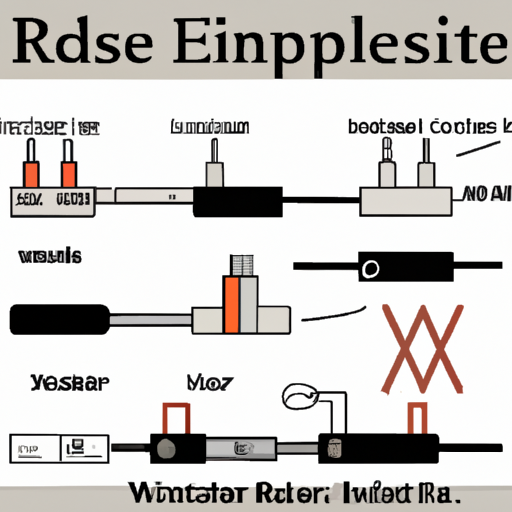When will the new resistor symbols be released?
When Will the New Resistor Symbols Be Released?
I. Introduction
In the world of electronics, clarity and precision are paramount. Resistor symbols, which represent one of the most fundamental components in electronic circuits, play a crucial role in ensuring that engineers and designers can communicate their ideas effectively. As technology evolves, so too must the symbols we use to represent these components. This article aims to inform readers about the upcoming changes to resistor symbols, the reasons behind these changes, and their implications for the engineering community.
II. Background on Resistor Symbols
A. Historical Context of Resistor Symbols in Electronic Schematics
Resistor symbols have been a staple in electronic schematics for decades. Traditionally, the symbol for a resistor has been a simple zigzag line, which has served its purpose well in basic circuit diagrams. However, as electronic designs have become more complex, the limitations of these traditional symbols have become increasingly apparent.
B. Importance of Standardization in Electronic Design
Standardization is essential in electronic design, as it facilitates clear communication among engineers and designers across the globe. Organizations such as the Institute of Electrical and Electronics Engineers (IEEE) and the International Electrotechnical Commission (IEC) have played a significant role in establishing and maintaining these standards. A consistent set of symbols allows for better collaboration and understanding, especially in an increasingly interconnected world where projects often involve teams from different countries and cultures.
III. The Need for New Resistor Symbols
A. Limitations of Current Resistor Symbols
Despite their long-standing use, current resistor symbols have several limitations. One of the most significant issues is the ambiguity that can arise in circuit design. For instance, the traditional zigzag symbol does not convey information about the resistor's value, tolerance, or power rating, which can lead to misunderstandings during the design and implementation phases.
B. Technological Advancements and Their Influence on Symbol Design
The rapid advancement of technology has also influenced the need for new resistor symbols. Modern electronic circuits often incorporate complex components, such as integrated circuits and programmable devices, which require more detailed representations. As a result, there is a growing demand for symbols that can accurately reflect the intricacies of contemporary electronic design.
IV. Development of New Resistor Symbols
A. Overview of the Process for Creating New Symbols
The development of new resistor symbols is a collaborative effort involving industry experts, organizations, and feedback from the engineering community. This process typically begins with identifying the limitations of existing symbols and gathering input from engineers who work with these components daily.
B. Key Features of the New Resistor Symbols
The new resistor symbols are designed to enhance clarity and ease of understanding. They will incorporate features that provide more information at a glance, such as color coding for resistance values and additional markings for tolerance and power ratings. Furthermore, these symbols will be compatible with digital design tools and software, making it easier for engineers to integrate them into their workflows.
V. Timeline for Release
A. Current Status of the New Resistor Symbols
As of now, the new resistor symbols are in the development and testing phases. Various industry groups are working diligently to finalize the designs and ensure that they meet the needs of the engineering community. This process includes multiple rounds of feedback and revisions to address any concerns raised by engineers.
B. Anticipated Release Date
While it is challenging to pinpoint an exact release date, industry experts anticipate that the new resistor symbols will be finalized within the next year. Factors influencing this timeline include the complexity of the symbols, the need for thorough testing, and the potential for delays due to unforeseen challenges. However, the engineering community is optimistic that the new symbols will be available soon, paving the way for improved communication and design practices.
VI. Implications of the New Resistor Symbols
A. Impact on Engineers and Designers
The introduction of new resistor symbols will have significant implications for engineers and designers. One of the primary challenges will be the need for training and adaptation to the new symbols. Engineers will need to familiarize themselves with the updated representations and understand how to incorporate them into their designs effectively.
Additionally, changes in documentation and design practices will be necessary. Engineers will need to update their existing schematics and documentation to reflect the new symbols, which may require additional time and resources.
B. Effects on Education and Learning
The impact of new resistor symbols will also extend to education and learning. Textbooks and educational materials will need to be updated to include the new symbols, ensuring that students are learning the most current practices in electronic design. Furthermore, engineering curricula will likely incorporate the new symbols into their coursework, preparing future engineers for the evolving landscape of electronics.
VII. Conclusion
The upcoming release of new resistor symbols represents a significant step forward in the standardization and clarity of electronic design. As technology continues to advance, it is essential for the symbols we use to evolve alongside it. Engineers and designers must stay informed about these changes and be prepared to adapt to the new symbols in their work.
In conclusion, the new resistor symbols will not only enhance communication among engineers but also improve the overall quality of electronic design. As we look to the future, it is crucial for professionals and students alike to embrace these changes and continue to advocate for standardization in the field of electronics.
VIII. References
1. Institute of Electrical and Electronics Engineers (IEEE) - [IEEE Standards](https://www.ieee.org)
2. International Electrotechnical Commission (IEC) - [IEC Standards](https://www.iec.ch)
3. Electronics Tutorials - [Understanding Resistor Symbols](https://www.electronicstutorials.com)
4. Engineering Education Resources - [Updates in Engineering Curricula](https://www.engineeringeducation.org)
By staying informed and engaged with these developments, the engineering community can ensure that it remains at the forefront of innovation and collaboration in electronic design.
